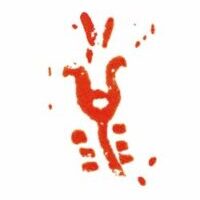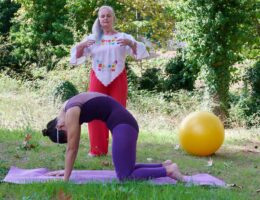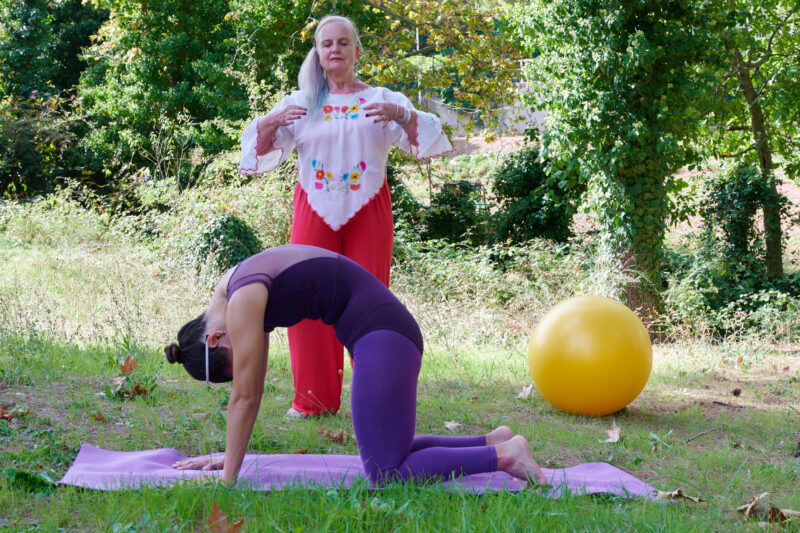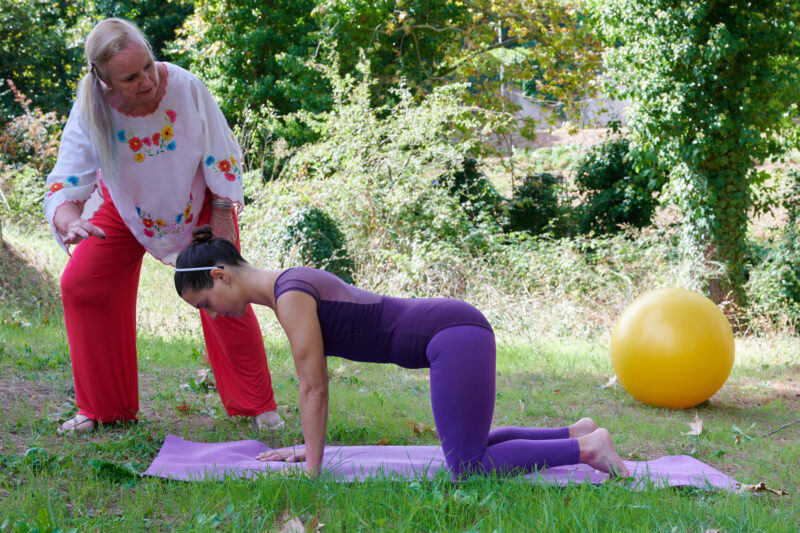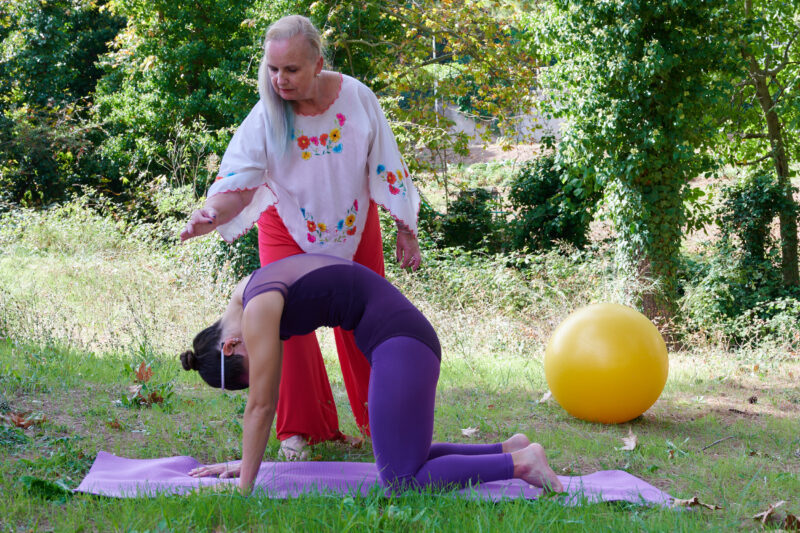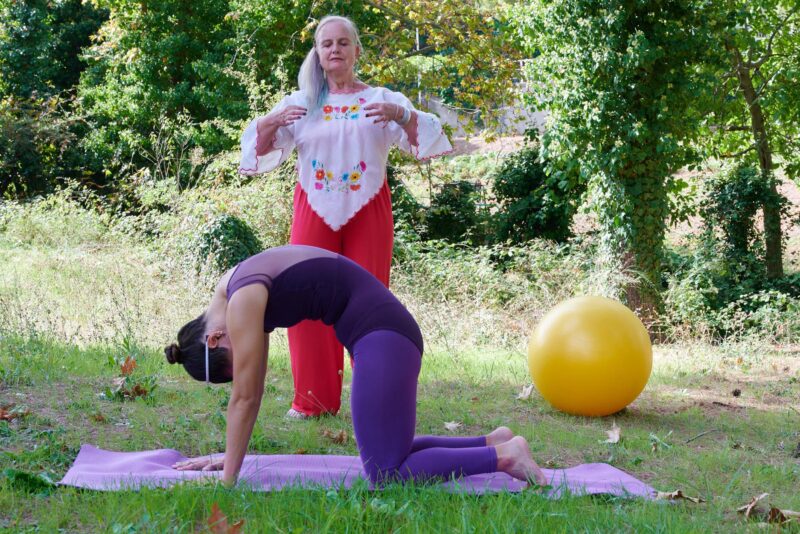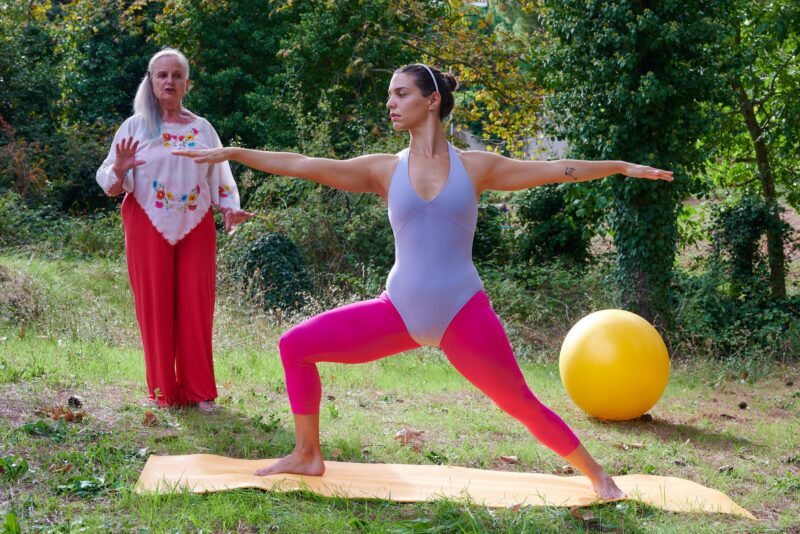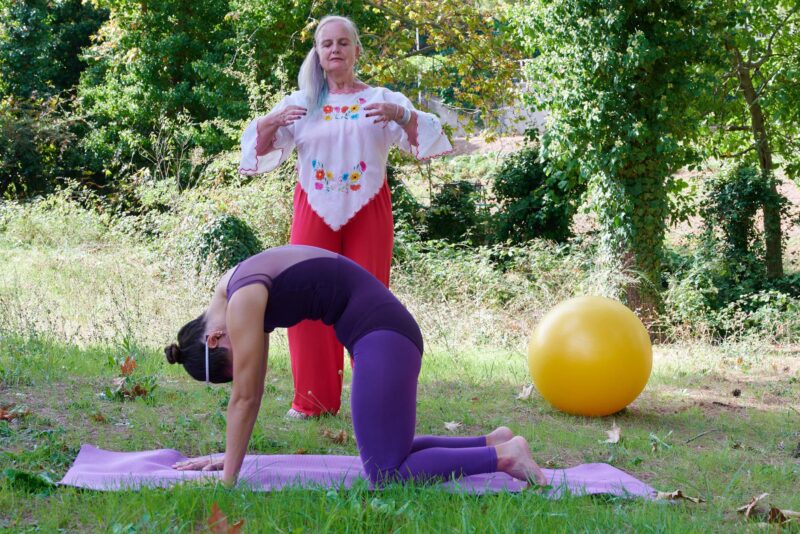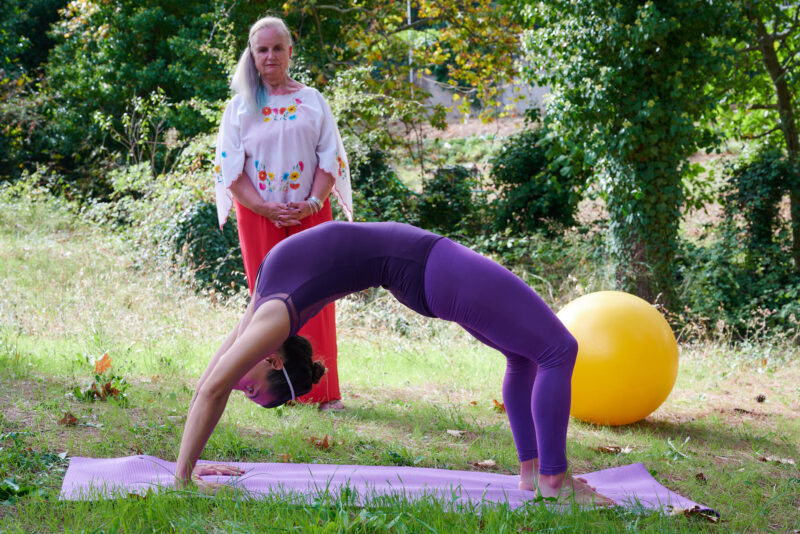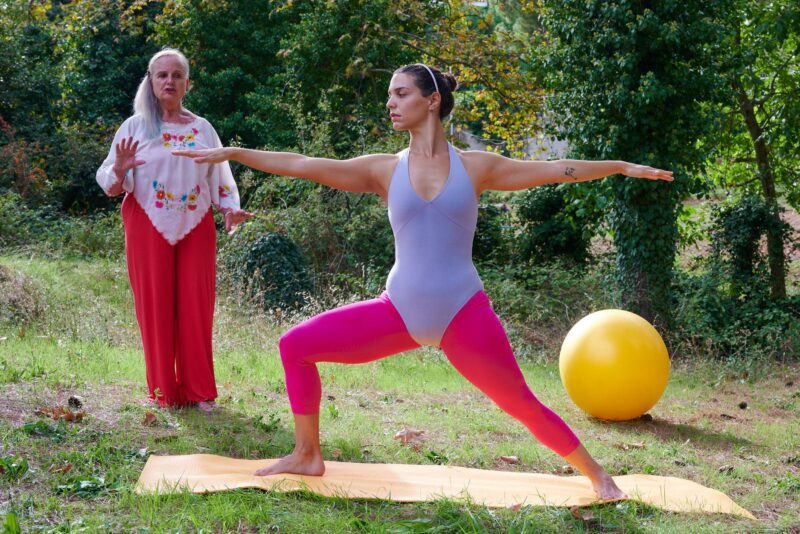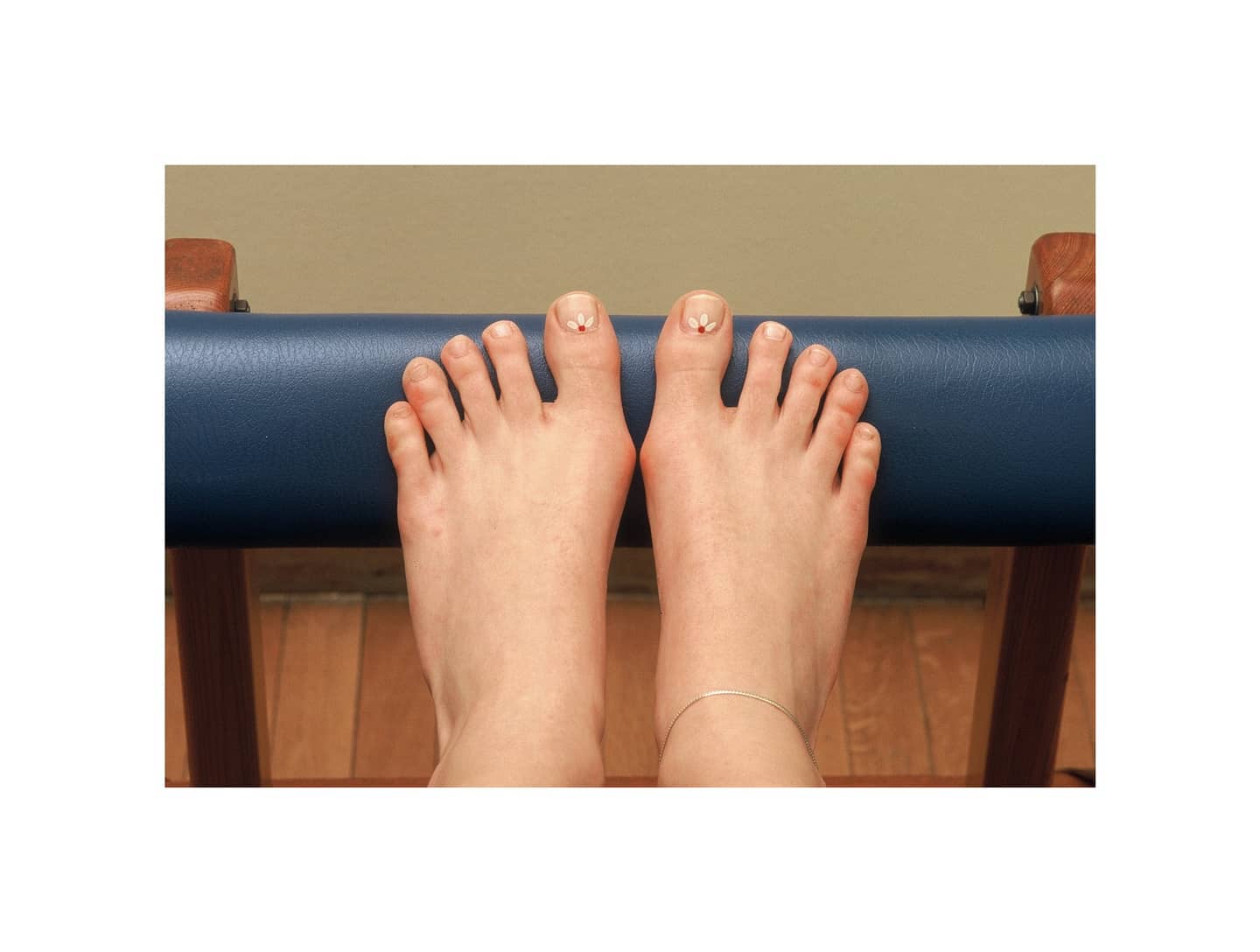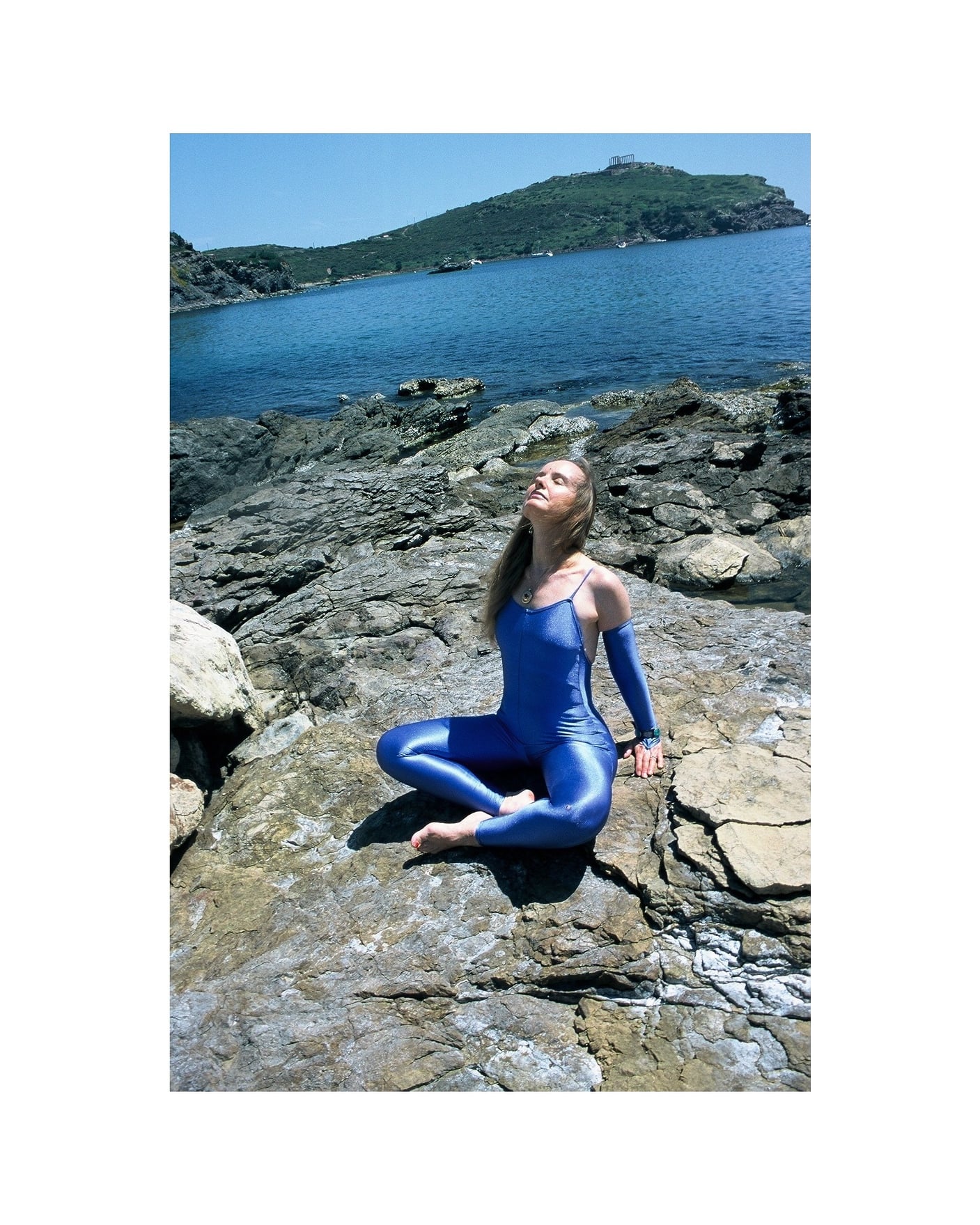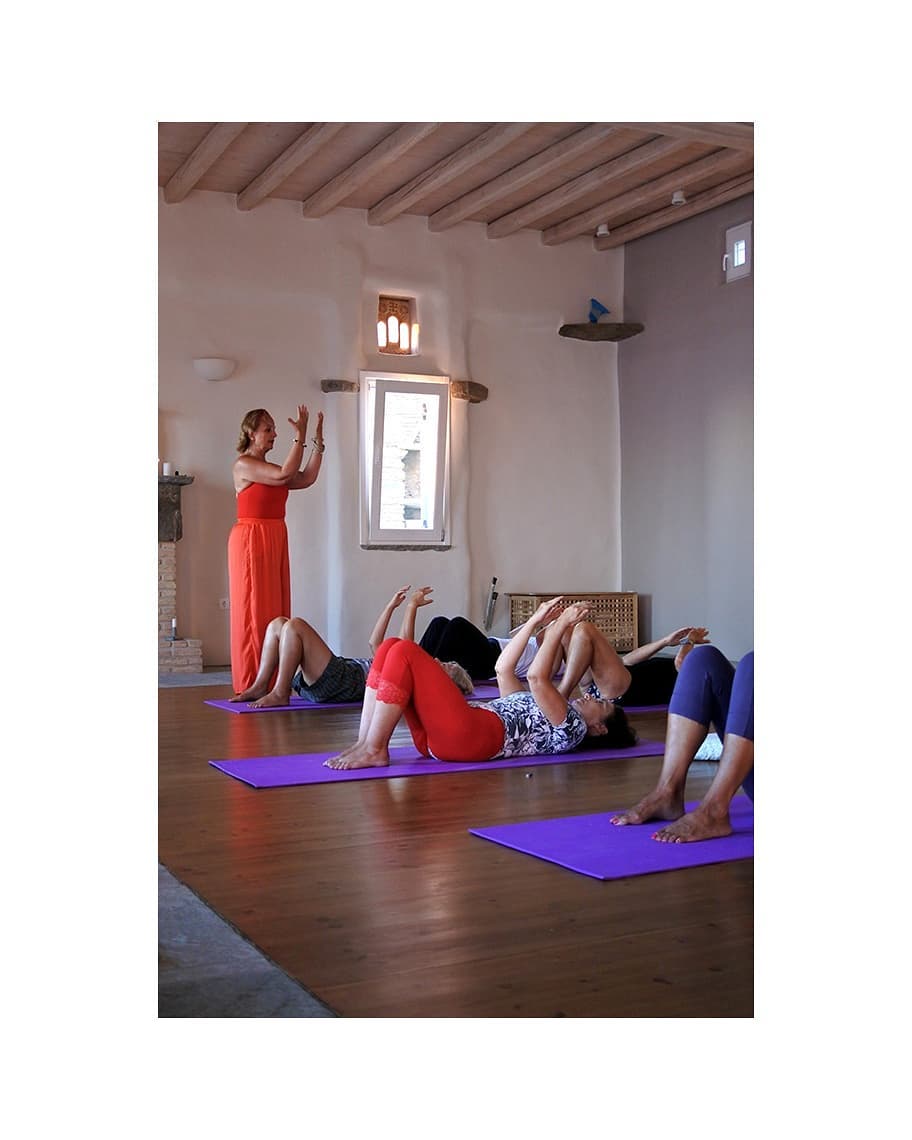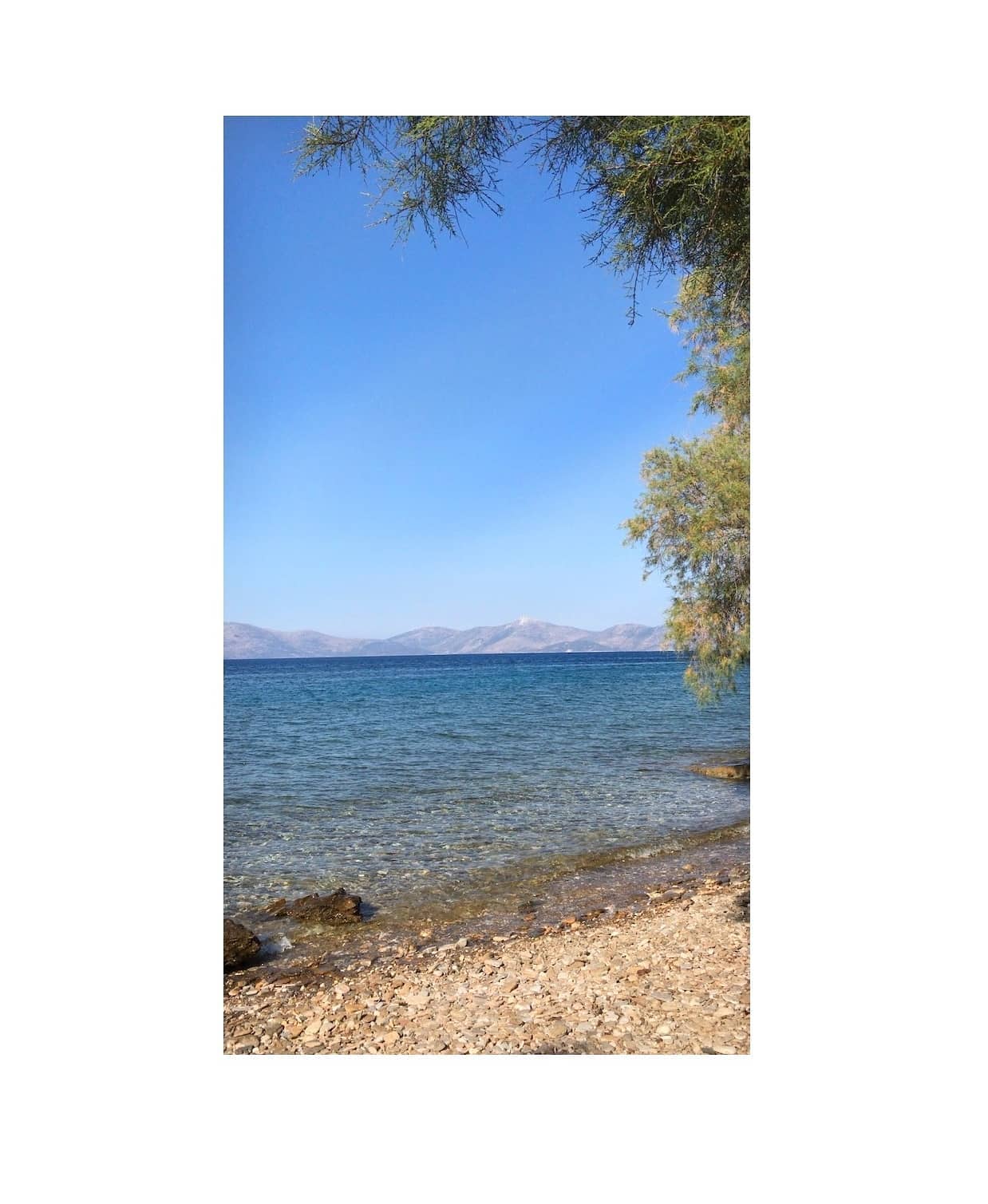Leg alignment is one of the most important things that you can learn in terms of injury prevention and in helping those who already have knee and back injuries.
Good leg alignment is essential for everyone. It is super important for dancers, athletes, those with knee problems and back problems.
PRACTICING THE EXERCISE ALONE
You can do this exercise by yourself with good results. It is nice to practice with a teacher or a friend. Follow the instructions as if you are both student and teacher. You will need to use your imagination (which is a powerful tool) and observe your body carefully. You will not be able to reach to touch all the places mentioned. Define your kneecap with one hand and place the other hand on your sit bone to help yourself have a sense of the architectural lines.
PRACTICING AS A TEACHER/HELPER
When teaching this, presence and a good sense of touch is essential you also need to really take as much time as it needs. This time is never wasted as the body remembers what is good for it. The next time you come back to it will be better. As you develop as a teacher or student you will get better and better at teaching this.
STARTING POSITION.
The student sits on a mat with her back supported on a cushion placed against a wall. Her knees are bent, the heels in a straight line with the sit bones.
☆ Sit directly in front of your student with your legs comfortably open. (You may need to move back as the exercise progresses.) Explain to the client that you will be working on aligning the bones. The flesh, the muscles and the fascia need to be as relaxed as possible in order for them to follow the new alignment of the bones. They should feel like a bone person. Tell them to imagine three straight lines of energy.
THREE LINES OF ENERGY
- THE FIRST LINE CONNECTS THE SIT BONE TO THE HEEL I imagine a string that connects the sit bone to the heel.
- THE SECOND STRAIGHT LINE IS DRAWN BETWEEN THE CENTER OF THE KNEECAP AND THE SPACE BETWEEN THE BIG TOE AND THE SECOND TOE. Be very careful that you define the actual kneecap (patella) and find the center of it. You need to let the leg slide down on some people to find it. Do not look at the general shape of the knee. Work only with the bones. If there is miss-alignment some muscles may be overdeveloped.
- THE THIRD LINE IS AN IMAGINED PLUMB LINE THAT BEGINS ABOVE THE KNEE, RUNS THROUGH THE CENTER OF THE KNEE TO THE GROUND (TO GRAVITY). Imagine there it like a string with a weight at the end. The client will slowly straighten the leg keeping this image in mind.
The teacher/helper holds (and therefore defines) the kneecap between the thumb and the second finger of one hand and keeps the heel in alignment with the other. Be careful that your touch is firm but not harsh.
Ask the student to begin sliding her foot along the mat moving towards straightening the leg. Both of you make sure that the architectural lines are adhered to.
The client leaves the weight of the heel well into the floor (without pushing). This helps her to keep the hip joint soft and relaxed. The toes are relaxed.
FOCUS AND BREATH
Problems with miss alignment usually occur about half way down. The second there starts to be a miss alignment stop. Ask your client to close her eyes and to focus gently and non-judgmentally into her own body and notice where she might have tension, holding or even pain. Once she identifies this area ask her to keep her focus there. Remind her that energy follows thought. Just by focusing 100% on an area of her body in a loving non-judgmental way she has already started a process of change, of healing. Tell her to take a deep breath in and as she breaths out to soften in that specific area. Take your time. The process may take two or three breaths or there may be more than one area of tension. ONLY when you have both completed this process start continuing the exercise. It may be that you must stop more than once before the leg is finally straight.
Another moment in time, which is very important in this process, is just before the knee finally straightens. Many people grip the knee as they do this. In order to prevent this happening ask your client to imagine the floor coming up to the knee rather than thinking of the knee straightening. This often helps to avoid old patterns.
DEFINING THE SHIN BONE
Now that the leg is straight, define the shinbone both for yourself and your client by, starting at the top of the shinbone and gently walking your fingers down the length of it. Noticing where the top of the shin bone is in relation to the Patella will give you an idea as to whether the connecting ligament is misaligned and therefore under strain.
Ask the client to lengthen the shinbone. You can do this by initially defining a small distance between two of your fingers on the upper surface of the bone. Make sure that you are touching gently but the client can feel your fingers.
One finger will always be at the head of the shinbone the other further down. It is possible to feel if the client is lengthening the bone or not. Increase the distance until you are accessing the whole length of the shinbone. Continue the process of lengthening by placing the fingers at the point between the end of the first and second toe and getting the client to lengthen towards your finger. Keep microscopically moving your fingers away all the time encouraging the client to lengthen.
LIFTING THE LEG WITHOUT GRIPPING
When you are satisfied that the lengthening is enough for this moment in time ask the client to continue the lengthening process. Define a spot on the thigh bone one third down from the highest point ask the client to send that point straight down to the mat. The lines of energy should be exact and specific.
Continue the process of lengthening (place your finger once again at the point between the big toe and second toe) until the leg lifts. The minute you might feel that the client shortens the leg in an effort to lift make her stop and start again changing the habit of shortening and griping the muscles to lift.
TURNING OUT THE ALIGNED LEG
Once you have achieved this either with the leg in the air or on the mat continue the process of lengthening and get the client to rotate ONLY IN THE HIP JOINT.
EXPLORATION
I love the Anatomy Coloring Book. Colour the page or pages of the bones of the leg and put it up somewhere that you can see it often.
Practice the leg alignment exercise alone or with help make a note in your journal how these exercises help you personally.
OBSERVE HOW THE PLACEMENT OF THE FEET AFFECTS LEG ALIGNMENT AND HOW LEG ALIGNMENT AFFECTS THE BACK.
Continue to observe how people use their feet but now also the alignment of the whole leg especially the relationship of the foot and the knee.
Notice if people with back problems or knee problems have good leg alignment or not.
Make notes on what improves in your own exercise with better leg alignment.
My deepest thanks and gratitude to the late Don Farnworth , a wonderful ballet teacher and Reiki master who passed on this very essential work to me.
Copyright Jenny Colebourne.
